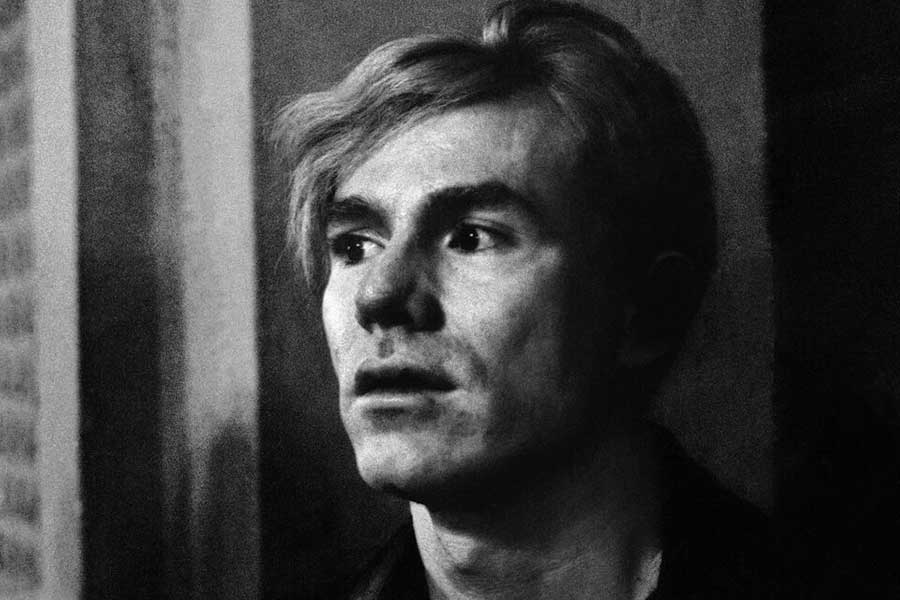Fans of edgy art and experimental music should check out “Underground Nights: When Warhol’s Exploding Plastic Inevitable Met The Y,” a new exhibit at the Gershman Y, 401 S. Broad St.
“Underground Nights” celebrates the 50th anniversary of a groundbreaking appearance by Warhol and the Velvet Underground, a band featured prominently in his multi-media show “Exploding Plastic Inevitable” at the old YM&WHA, now known as the Gershman Y. The original event took place Dec. 10-11, 1966. It was billed as a “mixed-media discotheque.”
According to Cheryl Harper, the guest curator who organized “Underground Nights,” it looks “at Warhol, and the Velvet Underground, and their interaction with Philadelphia separately from 1965 through the end of the decade.”
The exhibit includes artwork, ephemera and films. Part of the space is even lined with tinfoil, just like Warhol’s Factory. Visitors can see material from the artist’s 1965 solo show at Penn’s Institute for Contemporary Art and watch screen tests of all the band members, among other things.
Two special events are also planned. On Dec. 14, music critic Richie Unterberger will discuss the VU. Unterberger wrote an informative book about the band, “White Light/White Heat: The Velvet Underground Day-By-Day.”
On Dec. 15, Yo La Tengo and Dean & Britta will perform. Both bands readily acknowledge their debt to the VU and its principal songwriter, Lou Reed. In fact, Yo La Tengo portrayed the Velvet Underground in the 1996 movie “I Shot Andy Warhol,” and the Warhol Museum commissioned Dean & Britta to compose music to accompany Warhol’s screen tests.
LGBT viewers may be curious to see how Warhol, a gay man, and Reed, whose sexuality was fluid and transgressive, presented their work to a mainstream audience. Roughly three years before Stonewall, they eschewed camp and confronted the audience, in a sense anticipating today’s queer aesthetic.
The current exhibit came about serendipitously. Last spring, Harper noticed that the Philadelphia Museum of Art’s “International Pop” exhibit didn’t recognize the contributions of the Arts Council, a group of women based at the YM&WHA that helped promulgate contemporary art in Philadelphia. Led by Joan Kron and Audrey Sabol, the Arts Council organized a series of increasingly adventurous shows at the Y beginning in the late 1950s.
According to Harper, the women, all volunteers, were brilliant but bored housewives who used their talents to organize evenings of art, music, poetry and theater. They were good at it, too.
“You had all kinds of people coming to these events,” Harper said. “And they just kept pushing the envelope.”
The Gershman was already planning to commemorate the anniversary of the VU’s appearance with a concert when its director learned of Harper’s intervention in the “International Pop” show. They agreed that the event should be expanded and organized it quickly. “The result truly is a musem-quality exhibition that would have taken two years to prepare, but just working like all get-out, we were able to do it in six months,” Harper said.
While organizing “Underground Nights,” Harper heard from the family of a man named Sam Moskovitz, who’d taken photos at one of the original shows. Harper described Moskovitz as a talented amateur photographer who was in the right place at the right time.
“When I saw the photographs I was just totally taken with them. I’ve seen all kinds of Warhol material through the years, and I thought these were really different and really very special,” she said.
Six of Moskovitz’s photos have been blown up and are on display. These candid shots catch Warhol in unguarded moments and are a highlight of “Underground Nights.”
Those photos complement a 66-minute video of an early version of the Velvet Underground rehearsing at Warhol’s Factory. The band members, including the striking former fashion model Nico, are just hanging out and jamming — until the police interrupt and tell them to turn it down.
The Exploding Plastic Inevitable’s 1966 appearance in Philadelphia didn’t end well either. “It was absolutely panned,” Harper said, laughing. John Lombardi, who covered the performance for the Camden Courier-Post, wrote: “The older people left long before the two-hour ‘assault’ could lull them, numb them, then perhaps speak to them.”
That’s no surprise to Unterberger, who’s studied the band’s music and documented its history. As he noted, people at the YM&WHA were unprepared for the EPI. “They might have been expecting something relatively contemporary for 1966, but not something as radical as what the Exploding Plastic Inevitable presented.”
The Velvet Underground were certainly an atypical rock-and-roll band. To begin with, Reed’s lyrics tackled the gritty, urban problems young people in New York might encounter, including drugs and sex. Neither were standard subjects in pop music at the time. On top of that, the VU employed avant-garde musical techniques like high volume, eerie drones and blasts of feedback.
“When we hear it now,” Unterberger said, “it sounds like high art, but to many people back then it would have sounded like noise, and very obnoxious noise.”
A lot has changed since Warhol transformed everyday objects into works of art and the Velvet Underground’s proto-punk sound baffled listeners and critics alike.
Perhaps a visit to “Underground Nights” will give people today, many of whom take Warhol and the VU’s accomplishments for granted, a sense of just how radical their art was on those two evenings back in December 1966.
For more information about “Underground Nights,” visit www.gershmany.org.
